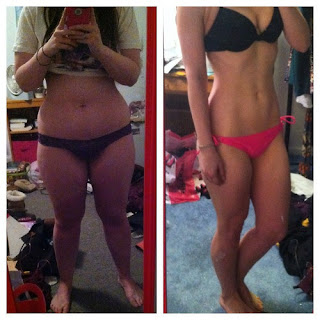Many fad diets neglect proper nutrition for weight loss. You may lose weight with these diets. However, your health may suffer. Is it possible to lose weight in a healthy fashion, while eating foods you love and getting proper nutrition at the same time? Absolutely. Believe it or not, the secrets of a healthy weight loss diet all boil down to a few easy rules.
First, shoot for as many servings of vegetables and fruits per day as you can handle. Sneak them in with each meal in various ways, whether it's adding a salad to your dinner, berries to your breakfast cereal, or a side of vegetables instead of French fries with your lunch. Try to eat fresh or frozen vegetables, and stay away from the canned varieties, which pack a lot of sodium and lose their nutrients through the canning process. (Tomatoes are an exception to this, as they retain nutrients and are quite healthy when canned.) Also, aim for a variety of colors. Different colored foods lend us different nutrients, so it is important to eat fruits and vegetables from the red, orange, yellow, white, and green families.
If you have a hard time getting your daily fruit and vegetable servings in, you can disguise your food to hold more nutrients! For instance, try a fruit and berry smoothie with a little low fat ice cream. Or, finely grind up carrots and add them to your spaghetti sauce. You can even grind up spinach and add it to meatballs or low fat hamburgers or turkey burgers. With a little ingenuity, you'll find those fruits and vegetables disappearing into your system quite stealthily and easily!
Another food group that promotes good nutrition and healthy weight loss is whole grains. Instead of white bread, noodles and rice, which have been stripped of their beneficial nutrients, eat as many whole grain products as possible. This includes whole wheat bread and pastas, bran, rolled oats, brown rice, and many other types of grain. If you want to experiment, you might even try barley, quinoa, or another more exotic grain that does not receive as much focus in typical western culture.
When you are looking for whole wheat bread, be wary of advertising tricks. Many breads and cereals will announce that they are made of wheat or contain whole grains. However, wheat flour is not the same thing as whole-wheat flour, and even a cereal with whole grains can be loaded up with white flour as its main ingredient. Make sure that the very first ingredient in your bread and cereal is one hundred percent whole wheat, or another whole grain flour, such as oat.
In addition to fruits, vegetables, and whole grains, you will also want to make sure you are limiting sugary, fatty foods. It is a good idea to have a little bit of fat each day, but your fat should come from healthy sources such as olive or canola oil. Shortening, butter, and other saturated fats are very unhealthy. You will also want to avoid trans fats, and the best way to do this is to steer clear of packaged foods and look for fresh, whole foods instead. A word of caution: although a small amount of healthy fat is good for you, use fats sparingly while trying to lose weight. A little goes a long way.
Finally, it is important to note that although you are eating healthfully, you can still gain weight if you eat too much of a good thing! Be loosely aware of your calorie intake each day, and make sure you don't go over the amount specified for weight loss by your doctor.
Good weight loss is not about deprivation and focusing on what you can't have. Rather, it is about celebrating the joys of eating nutritious, whole foods. Even a week or two into this diet plan, you will begin to notice that your energy has picked up, your eyes look brighter, and you feel great. Don't give up, even if it's difficult at first. These new habits will soon become a way of life that will cause you to be the best person you possibly can be.


